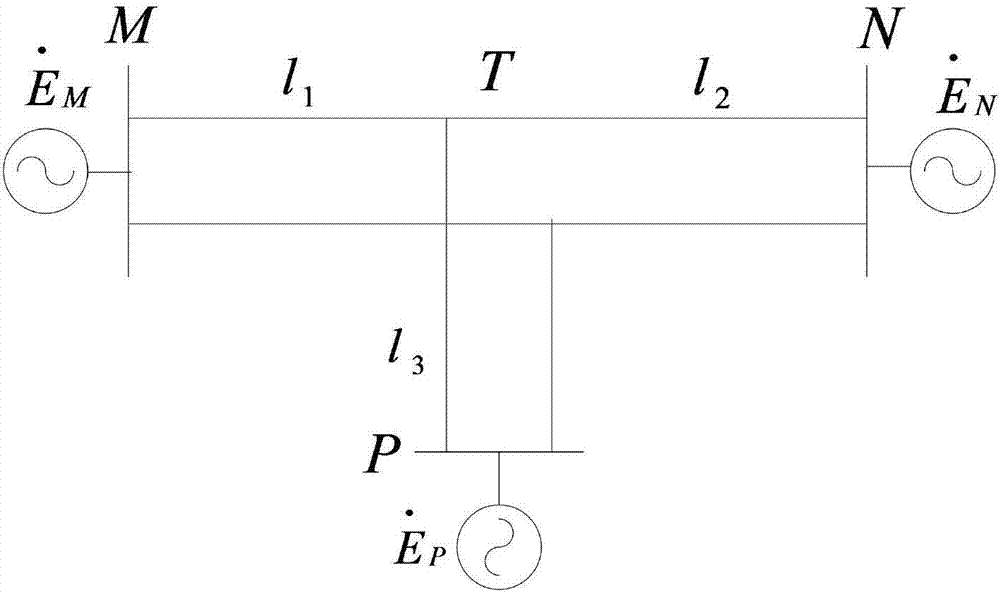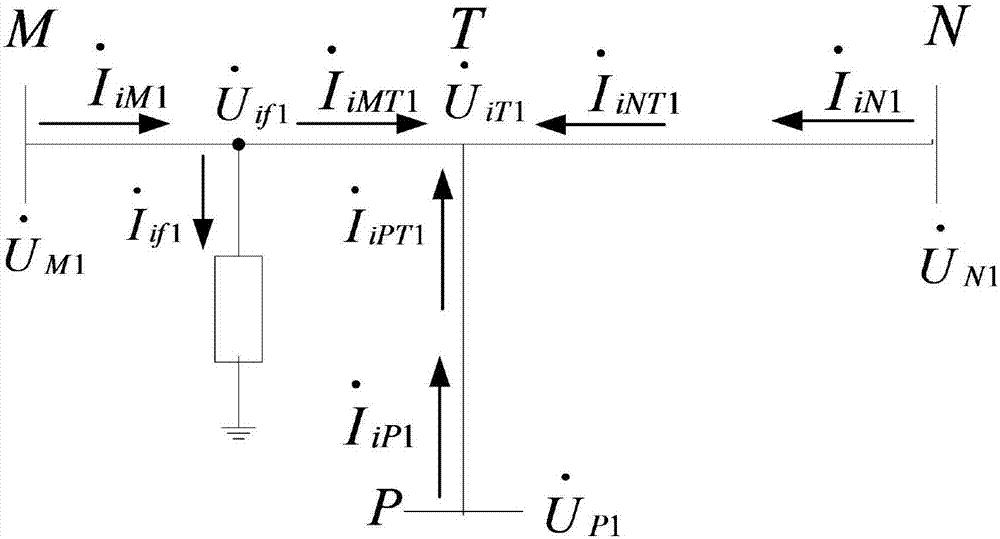Common-tower double-circuit T-type power transmission line fault distance measurement method based on positive sequence current difference
A positive sequence current, transmission line technology, applied in the direction of detecting faults, fault locations, and measuring electricity according to conductor types, can solve the problems of fault branch identification dead zone, complex structure, less research, etc., to achieve good applicability, measurement Highly accurate, easy-to-achieve effects
- Summary
- Abstract
- Description
- Claims
- Application Information
AI Technical Summary
Problems solved by technology
Method used
Image
Examples
Embodiment Construction
[0032] The content of the invention of the present invention will be described in further detail below according to the accompanying drawings.
[0033] figure 1 It is a schematic diagram of the same-tower double-circuit T-shaped transmission line system applying the present invention. The present invention uses a distributed parameter model to propose a fault location method for double-circuit T-type transmission lines on the same tower based on positive-sequence current differences. First, the current transformer at the protection installation site is used to collect the current data of each phase at the three ends of the double-circuit T-type transmission line system. And use the symmetrical component method to find the positive sequence current component of the two-circuit line; then calculate the ranging function of the three branches from the positive sequence current component of the double-circuit T-shaped transmission line, and measure the distance according to the dis...
PUM
 Login to View More
Login to View More Abstract
Description
Claims
Application Information
 Login to View More
Login to View More - R&D
- Intellectual Property
- Life Sciences
- Materials
- Tech Scout
- Unparalleled Data Quality
- Higher Quality Content
- 60% Fewer Hallucinations
Browse by: Latest US Patents, China's latest patents, Technical Efficacy Thesaurus, Application Domain, Technology Topic, Popular Technical Reports.
© 2025 PatSnap. All rights reserved.Legal|Privacy policy|Modern Slavery Act Transparency Statement|Sitemap|About US| Contact US: help@patsnap.com



